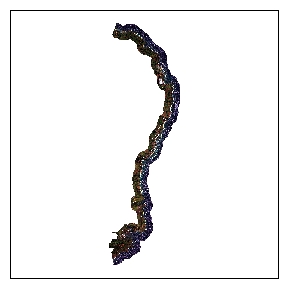The Kapaʻa study area (transects 0 – 144) is located on the east coast of Kauaʻi. The shoreline is composed of carbonate sand, boulder groins and hardened shoreline with a fringing reef offshore. The area is exposed to persistent trade winds and rough seas throughout the year.
Overall, the area is experiencing chronic erosion with an average shoreline change rate of -1.0 ft/yr. The shoreline lends itself to division into three sections. The northern section is Keālia Beach (transects 0 – 61). It is bounded by the remnants of Keālia Landing in the north and hard basalt headland to the south. Keālia Beach has experienced erosion with an average shoreline change rate of -1.2 ft/yr. The next section of beach (transects 63 – 104) extends from the basalt headland to the groins stabilizing Moikeha Canal mouth in the south and is the northern portion of Kapaʻa Beach Park. This section of shoreline is highly variable and has experienced erosion with an average shoreline change rate of -0.6 ft/yr. Kapaʻa Beach Park continues south into the next section of shoreline (transects 106 – 144) to the Waikaea Canal mouth. This area has experienced erosion with an average shoreline change rate of -0.6 ft/yr. Previous studies* found similar trends in shoreline change for the Kapaʻa study area.
*Makai Ocean Engineering and Sea Engineering, 1991 Aerial Photograph Analysis of Coastal Erosion on the Islands of Kauai, Molokai, Lanai, Maui, and Hawaii. State of Hawaii Office of Coastal Zone Management Program.
Last updated: July 2021
Directions: To view a larger image of the photo, click on the image. To download the georeferenced TIFF version of the photo, click on the name
Partial coverage:

















